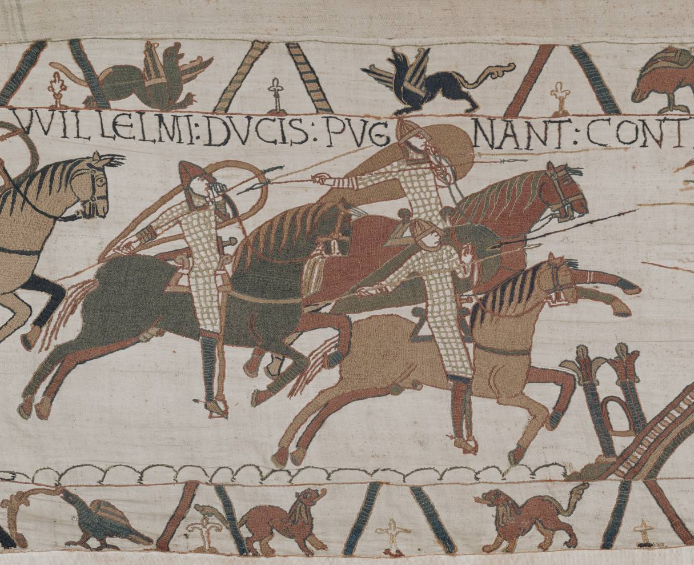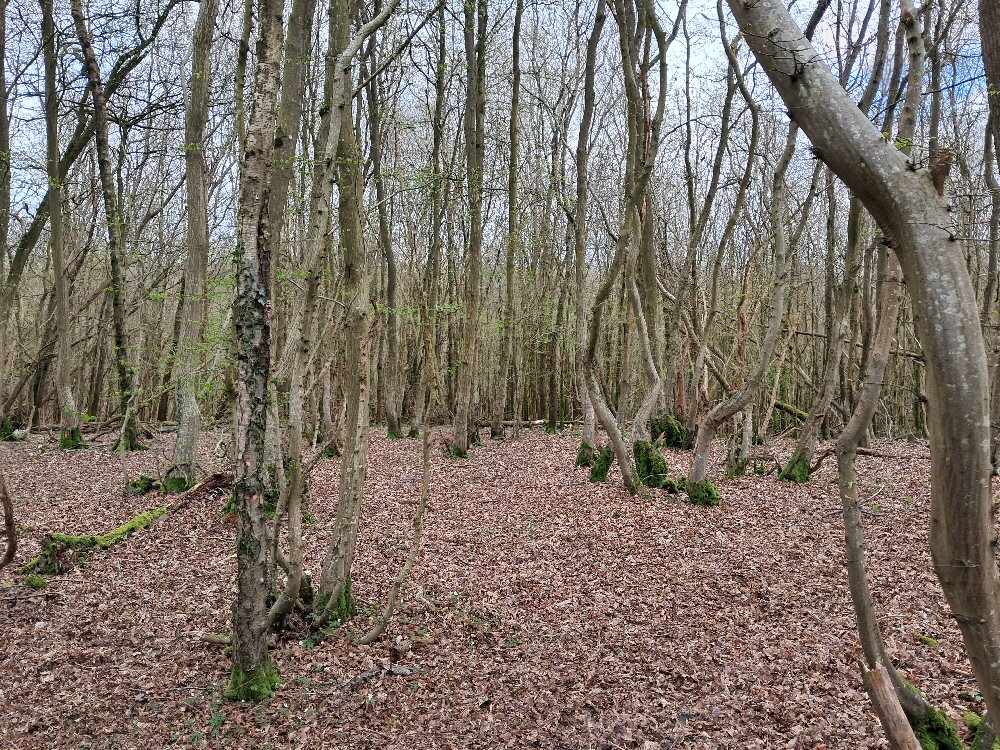|
 | Anglo Saxon History |  | |
| | Battle of Hastings 1066AD Observations ‑ Norman Cavalry at the Battle of Hastings |
|---|
| | |
|---|
| Norman Cavalry and likely tactics |
|---|
| | |
|---|
| Historic details of these knights ▲ |
|---|
The Bayeux Tapestry gives us the best view of Knights of the period, with the majority of images showing the cavalry
throwing spears overhead.
| 
| | |
|---|
| Viking Settlement in Normandy 911AD ▲ |
|---|
From Wikipedia:
The siege of Chartres took place in spring 911AD during the age of Viking incursions in Europe. The Viking leader,
Rollo, and his men laid siege to the city of Chartres, in West Francia. But they failed to achieve their goal before the
arrival, in July 911AD, of a relief army sent to battle them. The engagement that ensued resulted in the defeat of the
Norsemen.
Following Rollo's defeat, the King of the West Franks, Charles the Simple, granted him a territory in the northern lands
of his kingdom in exchange of an oath of fealty and his religious conversion. This territory, located between the mouth
of the Seine and Rouen, a city Rollo had previously raided and seized in 876, officially formed the fief known as the
County of Rouen. This county, through kinship in the decades to come, would expand into what came to be known as the
Duchy of Normandy.
Prior to the settlement of the Vikings, Brittany had been made into a Dukedom after they defeated Charles the Bald at
the Battle of Jengland in 851AD
Battle of Jengland AD851 - implies a quick defeat for Harold at
Hastings 1066AD
If you take a look at the tactics the Bretons used in the above article and the images from the Bayeux it would seem
likely that the Normans copied the Breton tactics of riding up to the enemy, throwing spears and then retiring to
reload.
This was of course more likely after Brittany was defeated by the Normans in 1065AD at the Battle of Dinan, and
became affiliated with Duke William.
| | Viking Horsemen ▲ |
|---|
There appears to be no evidence for Vikings to fight from horseback and they just appear to have been used as fast
transport for the more elite troops, providing fast deployment. This was recorded when the Viking Great Army invaded
Britain in 865AD, and also prior to this in A.D. 893 when the Anglo Saxon chronical records 'This year went the large
army, that we before spoke about, back from the eastern district westward to Bologne; and there were shipped; so that
they transported themselves over at one time with their horses withal.'
The Saxons appeared to use the same tactics, especially with the Huscarls and their Viking axes where fighting on
horseback with a large axe is impractical because the weight of the weapon would make the horsemen unbalanced when
swinging it.
| | |
|---|
| Norman Cavalry ▲ |
|---|
From the Bayeux and some of the Chronicles it would seem that the Normans raced up to the enemy, threw spears then
charged in with their swords, or waited until the Saxons followed up a retreat and then cut the stragglers down.
We should also realise that the Norman Knights rode smaller horses than the later steel plate protected Norman Knights,
as their ring mail armour was lighter and hence the horses had not been bred to carry heavily armoured knights that
would charge the enemy with long lances.
So we have to think of them as lightish protected cavalry with range weapons.
| | |
|---|
The wooded areas around Battle ▲
|
|---|
 The great Oak Forest of Andredsweald surrounded the Hastings Peninsular and had only been cut down to for construction,
shipbuilding and iron working for about 10 miles from Hastings.
The great Oak Forest of Andredsweald surrounded the Hastings Peninsular and had only been cut down to for construction,
shipbuilding and iron working for about 10 miles from Hastings.
See The Great Forest of Andredsweald - Anglo
Saxon Chronicles
The image to the left shows the current woodland around the Battle area, and shows how dense the trees are, this would
make it very difficult to take horses through the forest.
The Forest was looked on as being impassible except where the old Ridgeway's or Roman roads passed through, unless you
lived in the Forest.
This would have made it very difficult to leave the area by road, and by the same token, the local forest would provide
excellent timber to build ships, to sail away from the area.
| | |
|---|
| Conclusion ▲ |
|---|
The Norman Cavalry was in general a much lighter fast moving force that preferred to fight by
throwing spears and then charging in with their swords when the opportunity arose.
Cavalry being deployed in the Hastings area was not really the best idea, as the area was wooded, with a forest nearby,
and very limited land routes to allow the force to leave the area. The much more open land of Kent would make a cavalry
force much more effective, so why did he land in this area?
Battle of Hastings 1066AD - C - Why
Hastings?
|
|
|
|
|
| |
|
|
Local Interest
Just click an image |
|
|
|
|
|
|
|
|
|
|
|
|
| |
|
|